#Gao Qipei
Text
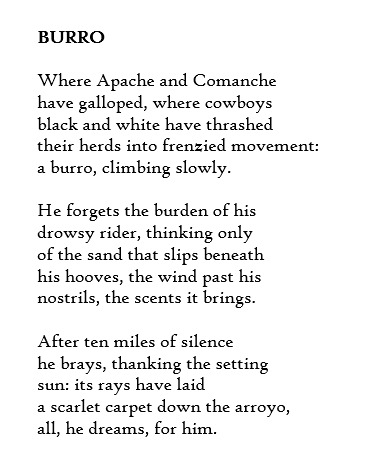
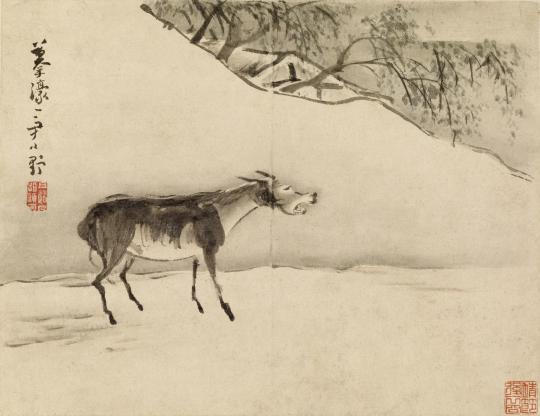
Braying Donkey, Gao Qipei, 1713
Today is International Donkey Day, so please enjoy this little salute to one of the humblest, yet hardest-working and most reliable, of creatures.
Text: BURRO
Where Apache and Comanche
have galloped, where cowboys
black and white have thrashed
their herds into frenzied movement:
a burro, climbing slowly.
He forgets the burden of his
drowsy rider, thinking only
of the sand that slips beneath
his hooves, the wind past his
nostrils, the scents it brings.
After ten miles of silence
he brays, thanking the setting
sun: its rays have laid
a scarlet carpet down the arroyo,
all, he dreams, for him.
#International Donkey Day#donkey#donkeys#poem#poetry#writing#creative writing#poets on tumblr#poets of tumblr#art#art history#Asian art#China#Chinese art#Imperial China#Qing Dynasty#Gao Qipei#animals in art#ink and color on paper#18th century art#Walters Art Museum
95 notes
·
View notes
Photo

Gao Qipei
Tiger Seen from the Rear, c. 1700
417 notes
·
View notes
Text
youtube
Watch the American Climate Leadership Awards 2024 now: https://youtu.be/bWiW4Rp8vF0?feature=shared
The American Climate Leadership Awards 2024 broadcast recording is now available on ecoAmerica's YouTube channel for viewers to be inspired by active climate leaders. Watch to find out which finalist received the $50,000 grand prize! Hosted by Vanessa Hauc and featuring Bill McKibben and Katharine Hayhoe!
#ACLA24#ACLA24Leaders#youtube#youtube video#climate leaders#climate solutions#climate action#climate and environment#climate#climate change#climate and health#climate blog#climate justice#climate news#weather and climate#environmental news#environment#environmental awareness#environment and health#environmental#environmental issues#environmental justice#environment protection#environmental health#Youtube
16K notes
·
View notes
Photo

Gao Qipei (Chinese, 1660–1734), Tiger, n.d.
5 notes
·
View notes
Photo
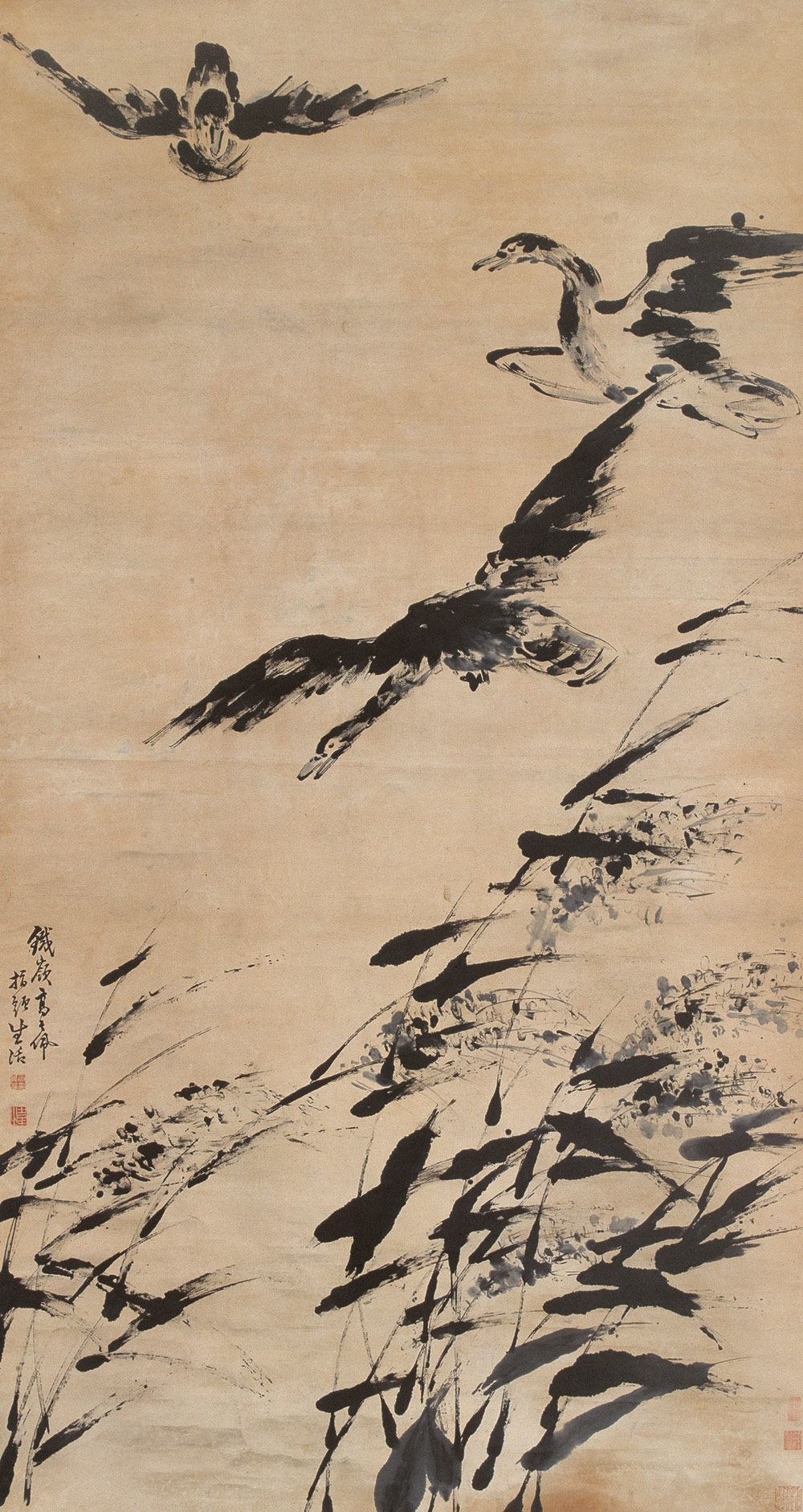
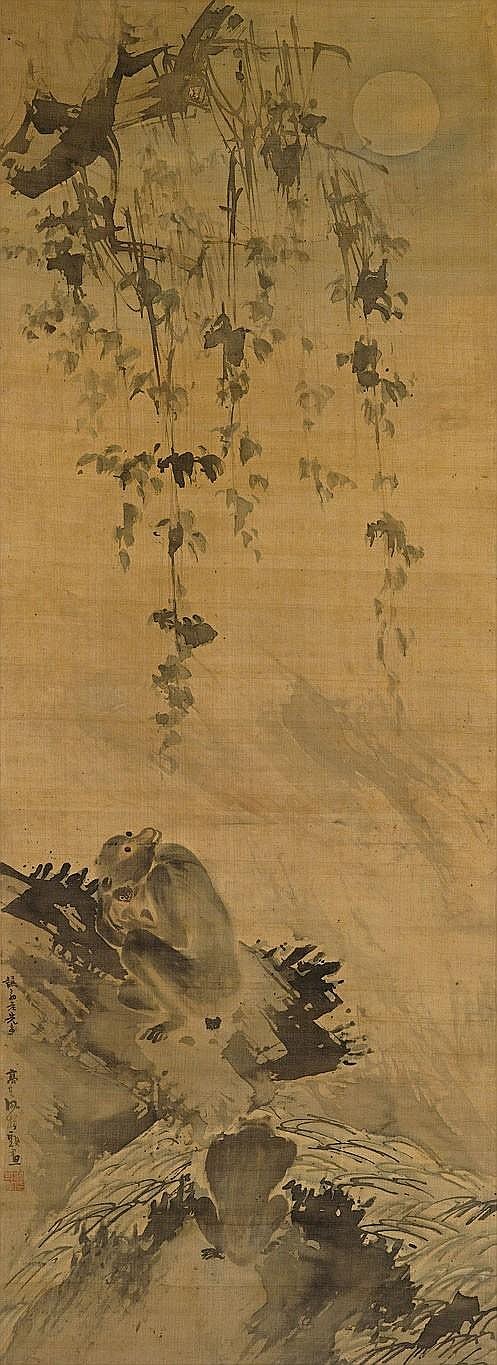
Gao Qipei, Wild Geese, 17th century, hanging scroll.
Gao Qipei, Monkey, 17th century, hanging scroll, ink and colour on silk, 143 x 52 cm.
1 note
·
View note
Photo
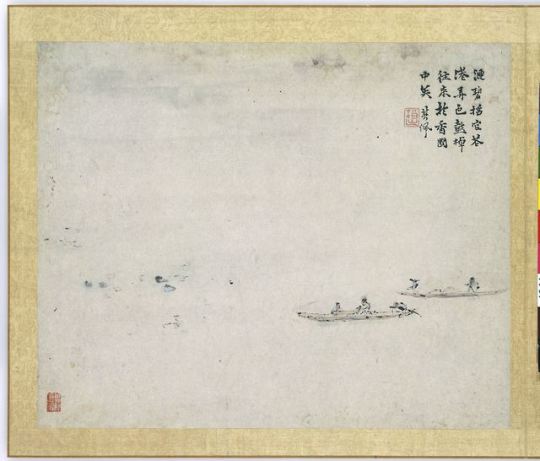
Silk painting with poem by 高其佩 Gao Qipei, China, 1700 - 1750
Rijksmuseum Amsterdam
Provenance: On loan from the Asian Art Society in The Netherlands (purchase Mayuyama Junkichi, Tokio, 1955)
AK-MAK-290-L
Gao Qipei (Chinese: 高其佩; pinyin: Gāo Qípeì; 1660–1734) was born in Jiangxi. He had success as an official in southern China, but is best known today as a painter. He initially gained reputation as an artist who did landscapes and figures in traditional style. By age twenty, he became known as an eccentric who preferred using his fingers instead of a brush. This style had precedents as Zhang Zao also preferred finger painting, but Gao Qipei went further. He grew his fingernails long to make them more effective instruments, and used his entire hand to create a highly individualized style.
[textsource: @wikipedia]
9 notes
·
View notes
Photo
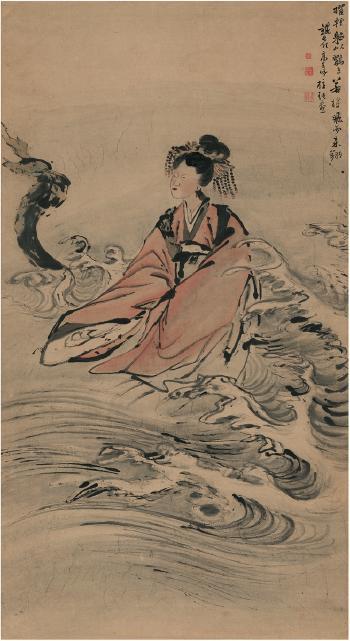
Fairy Luo by Gao Qipei (1660 - 1734)
98 notes
·
View notes
Text
youtube
Watch the 2024 American Climate Leadership Awards for High School Students now: https://youtu.be/5C-bb9PoRLc
The recording is now available on ecoAmerica's YouTube channel for viewers to be inspired by student climate leaders! Join Aishah-Nyeta Brown & Jerome Foster II and be inspired by student climate leaders as we recognize the High School Student finalists. Watch now to find out which student received the $25,000 grand prize and top recognition!
#ACLA24#ACLA24HighSchoolStudents#youtube#youtube video#climate leaders#climate solutions#climate action#climate and environment#climate#climate change#climate and health#climate blog#climate justice#climate news#weather and climate#environmental news#environment#environmental awareness#environment and health#environmental#environmental issues#environmental education#environmental justice#environmental protection#environmental health#high school students#high school#youth#youth of america#school
17K notes
·
View notes
Photo
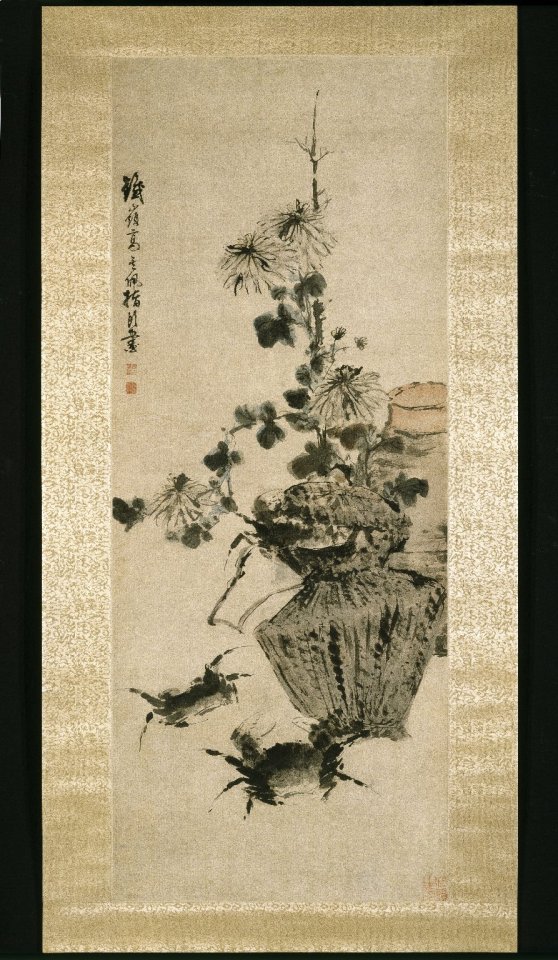
Crabs and Chrysanthemums, Gao Qipei, 18th century, Brooklyn Museum: Asian Art
Size: 39 3/4 x 15 3/4 in. (101 x 40 cm)
Medium: Ink and light color on paper
https://www.brooklynmuseum.org/opencollection/objects/110409
44 notes
·
View notes
Photo
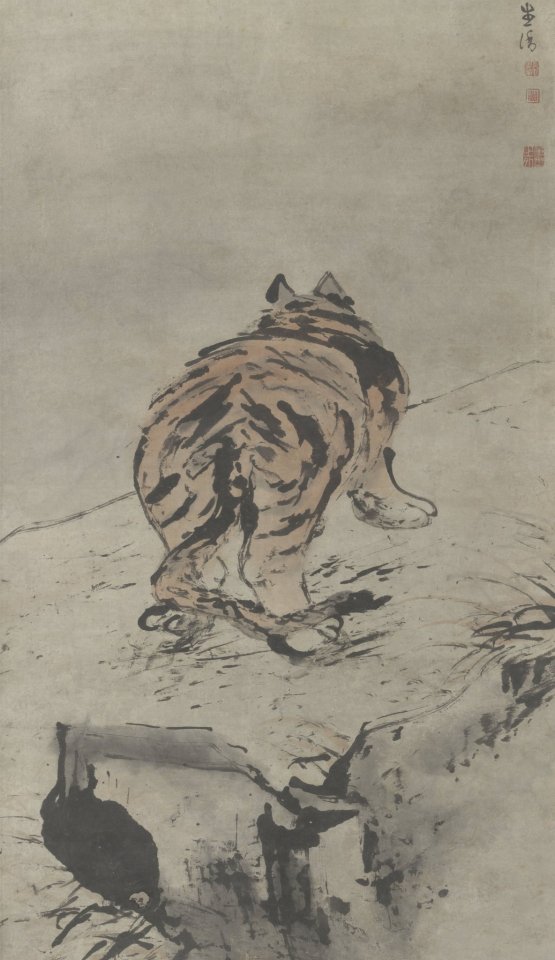
Tiger Seen from the Rear, Gao Qipei, c. 1700.
Source: https://twitter.com/rijksmuseum
2 notes
·
View notes
Photo
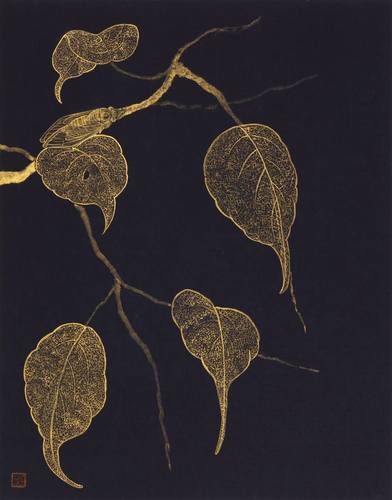
Prayer of A Cicada, HyunJung Kim
Drawing: goldpowder and realgold on Paper. Heaviness wrapped up with Lightness – Reading Kim HyunJung’s painting Lee DongChun (Fine art Connoisseur) Kim HyunJung’s paintings are cute and interesting. Her painting reminds us of paintings by Qi Baishi 齐白石 (1864-1957). Qi Baishi pursued beauty in his life, and his artistic spirit is found in his plant-and-insect paintings, flower-and-bird paintings, and figure paintings. Qi Baishi’s artistic spirit is sensed in Kim’s interesting subject matter and candid depiction.Kim audaciously uses ink and bright hues in in the manner of Qi Baishi who applied ink to leaves and red to flowers 墨叶红花. The composition in which subject matter is drawn to the edge of the paper is parallel to that of Qi Baishi’s flower-and-bird paintings and landscape painting of Li Keran’s 李可染 (1907-1989). Kim obviously learned from Qi Baishi. Qi Baishi said, “Learn from me you stand, copy from me you fall 学我者生, 似我者死.” Kim modeled herself after Qi’s artistic spirit rather than his painting style. Kim explored the artistic spirit in Qi Baishi’s painting, in which he emphasizes the meaning of painting and expresses his spirit, and reconstructed this in a realistic rendition. She calls this the “chulsa-ipgong 出写入工” technique. This is a melding of “xieyi 写意” painting (painting that underlines the painter’s spirit), “gongbi-hwa 工笔画” (painting done very carefully with the utmost care for details), and a new invention in tune with her emotion. Zheng Xie 郑燮 (1693-1765), one of the Eight Eccentrics of Yangzhou during the Qing Dynasty asserted, “Learn half, and throw away half 学一半, 撇一半.” This means even if a tradition is excellent, you have to learn only half of it. However, the traditional is currently completely disregarded. Kim learned her ‘half’ from traditional Eastern techniques. She studied the idioms of flower-and-bird painting from Song Dynasty, and learned from artists such as Chen HongShou 陈洪绶 (1599-1652), Yun ShouPing 恽寿平 (1633-1690), ShiTao 石涛 (1641-1707), BaDaShanRen 八大山人 (1625-1705), Gao QiPei 高其佩 (1660-1734), Jin Nong 金农 (1687-1764), and Kim HongDo 金弘道 (1745-1806). Moreover, she explored new methods in expression of color in traditional techniques. As she felt insufficiency in the use of pigment to depict significant parts of a painting, she made use of embroidery. This technique called “hwaju-subo 画主绣补” (Paining is used as primary and embroidery as ancillary) brought a new vitality to gongbi-hwa. The techniques of “chulsa-ipgong” and “hwaju-subo” are not the only revolution and innovation Kim has pursued. Getting psychological counselling, Kim realized the existence of her inner-child. She named her “Lala” and represented her special emotion in a pictorial language through this. Her Lala painting is a projection of her inner-child that she became aware of through psychological consultation, and for the artist a process of healing. This painting is in no way the product of pop art, but the sublimation of an artist’s inner-child to a work of art for the first time in art history. Kim’s Finding implicit rules is a portrayal of a young girl in meditation. The little girl carrying Lala on her back gazes vacantly at a dragonfly on a bare branch against the backdrop of a brick wall. Lala and the little girl look cute. The brick wall is a metaphor for constant time whereas the bare branches and dragonfly represent finite time in nature. The dragonfly acts out as the last leaf by O. Henry (William Sydney Porter, 1862-1910). As a projection of a psychological essay in painting, this work is a new literati painting of the 21st century reflecting Kim’s distinctive art-world. Kim lends new energy to gongbi-hwa through her realization of traditional Eastern painting. Kim has incarnated the spiritual world of intellectuals in our age in exquisite, flamboyant gongbi-hwa. This is why Chinese aestheticians and art historians have recently taken note of Kim’s painting.
https://www.saatchiart.com/art/Painting-Prayer-of-A-Cicada/960197/3943611/view
4 notes
·
View notes
Text
Фестивалът на драконовите лодки - какви са обичаите, свързани с него, и как звездите го отбелязаха?
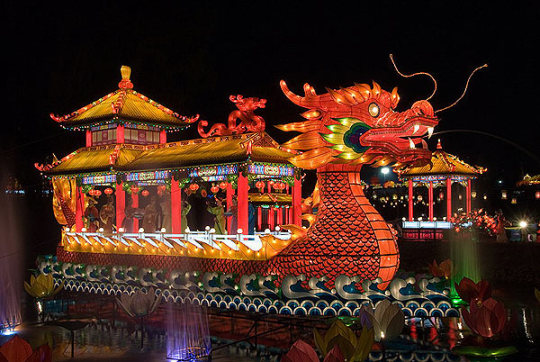
Днес се отбелязва Фестивалът на драконовите лодки, който произхожда от Китай и се пада на 5-я ден от 5-я месец от традиционния им календар, затова всяка година е на различна дата.
Една от историите за празника е свързана с поета и министър Ку Юан (ок. 340-278 пр.н.е.) от древната страна Чу по време на периода на воюващите държави на династията Джоу. Кралят решава да се съюзи със страната Цин, но Ку Юан не бил съгласен със съюза. Това не съвпадало с интересите на благородниците, които го обвинили в измяна и така той бил изгонен. Предположението му обаче се оказало вярно – 28 години по-късно Цин завзема столицата на Чу. От отчаяние китайският герой се самоубил, хвърляйки се във водите на река Ми Ло. Местните жители се опитали да го спасят, като за целта биели с барабани и хвърляли предмети във водата, за да подплашат рибите, но не успели. Оттогава те започнали да правят триъгълни пирамидки от коприна, в които слагали лепкав ориз, за да не ядат рибите от тялото на Ку Юан. Освен като политик, Ку Юан е познат и като знаменит поет, считан за основател на китайския романтизъм. Той е автор на стихотворението „Li Sao“ (“Среща със скръбта”).
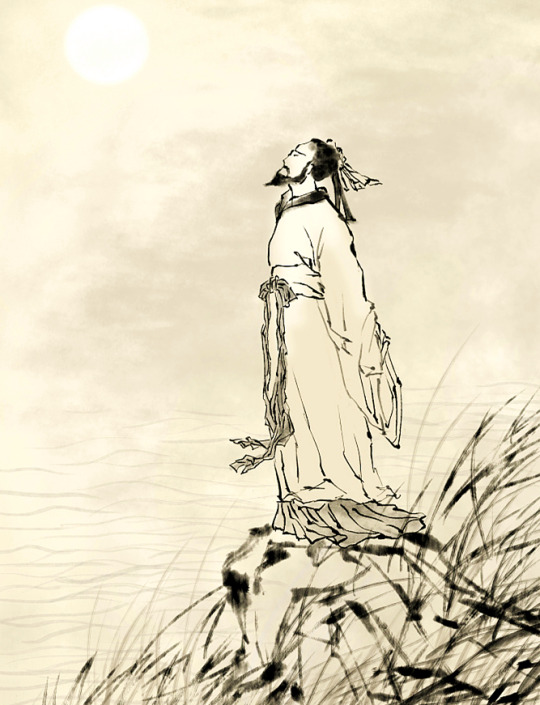
Друг мит за произхода на фестивала е за Cao E от източната династия Хан, която живеела с баща си в рибарско селище. Един ден баща ѝ отишъл на риболов в река Shunjiang и така и не се върнал. Cao се отправила към реката, за да го търси, но без успех. Тя плакала дни наред, а след това се самоубила, като скочила в реката на петия ден от петия лунен месец. Някои вярват, че благочестието и постоянството ѝ трогнало боговете, които ѝ позволили да намери тялото на баща си и да се обедини с него след смъртта. Селяни построили храм в памет на голямото ѝ синовно благочестие и денят отбелязва нейното величие.

Какви са обичаите?
Състезание с драконови лодки
Както подсказва и името, лодките са във форма на дракони. Всеки екип се опитва да пристигне преди другия до крайната точка, а един член от екипа седи в предната част на лодката, биейки барабан, за да поддържа духа и да гарантира, че гребците са в синхрон.
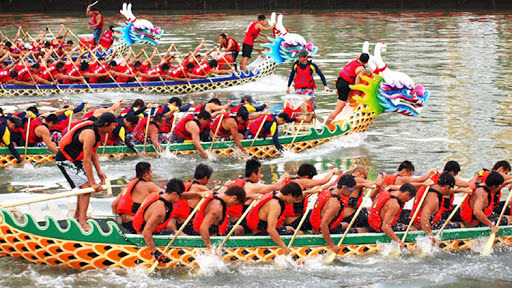
Ядене на дзонзи
Дзонзите представляват пирамидални оризови кнедли, обвити в тръстикови листа, като могат да са с различен пълнеж. В северната част на Китай хората предпочитат да са с хинап, докато на юг предпочитат подсладената паста от боб, прясно месо или яйчен жълтък. В днешно време дзонзи се намират лесно в супермаркетите и хранителните магазини, но някои семейства все още спазват традицията да ги правят в деня на фестивала.
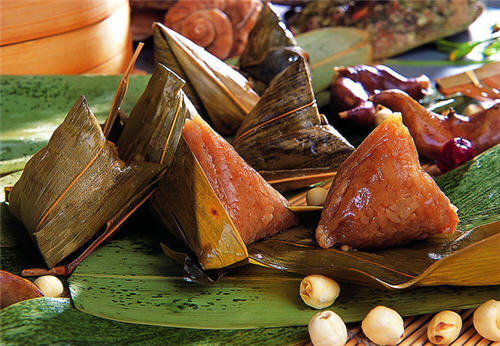
Окачване на каламус и листа от пелин
Вярва се, че окачването на каламус и листа от пелин на вратата може да предпази хората, които живеят там, от болести. Листата на каламуса приличат на мечове и се поставят, за да прогонят злите духове. От научна гледна точка фестивалът на драконовите лодки се пада през лятото, когато микроби, вредители и други отровни животни са активни. Както пелинът, така и каламусът излъчват специален аромат, който може да прочисти въздуха и да прогони комари и насекоми, като по този начин помага на хората да стоят далеч от болести и епидемии.

Носене на парфюмни торбички
Торбичките винаги са пълни с китайски билки, които могат да отблъскват вредители и други отровни животни. В наши дни той е по-популярен сред децата, а торбичките са направени в различни форми.

Поставяне на портрет на Zhong Kui
Zhong Kui е бил грозен човек, а на фестивала хората залепват неговия портрет на вратата или го окачват в стаята, за да защитят дома си.
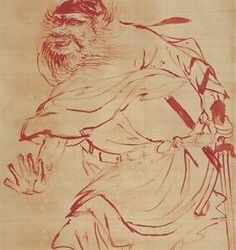
Рисунка: Gao Qipei
Балансиране на яйце
Според легендите, ако можете да балансирате яйце, изправено по обяд, това ще ви донесе късмет в продължение на цялата година.
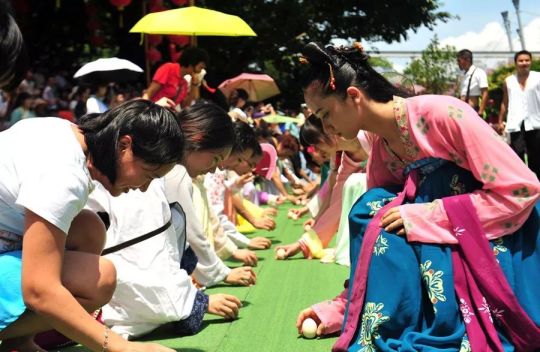
Как звездите го отбелязаха тази година?
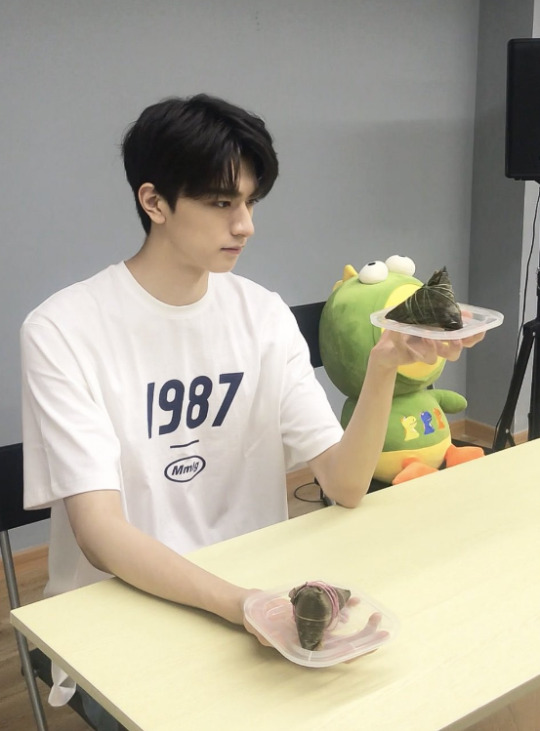
Lin Yi: “След като мислих цял ден, все още харесвам сладки дзонзи, а вие?”
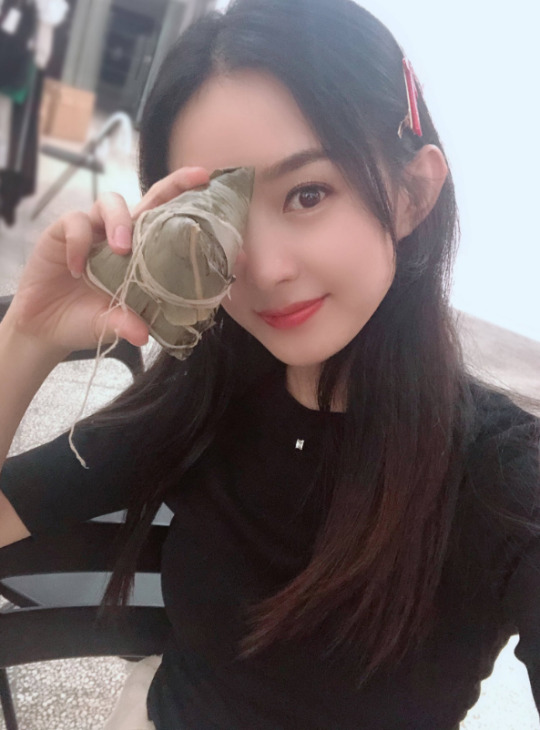
Zhao Liying
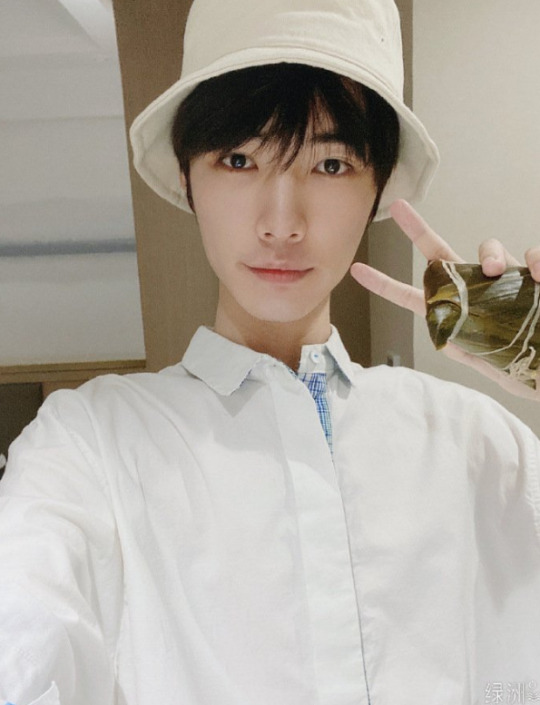
Song Jiyang
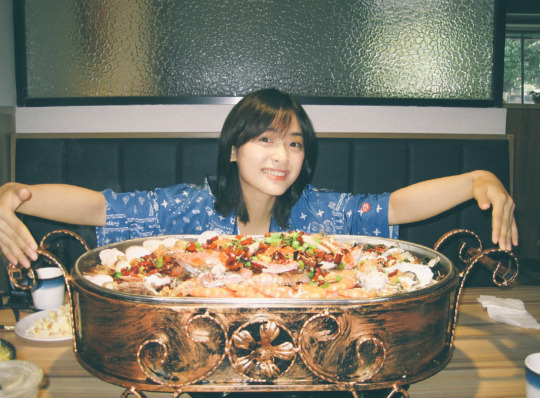
Shen Yue: “Честит фестивал на драконовите лодки!”

Joe Cheng

Janice Man
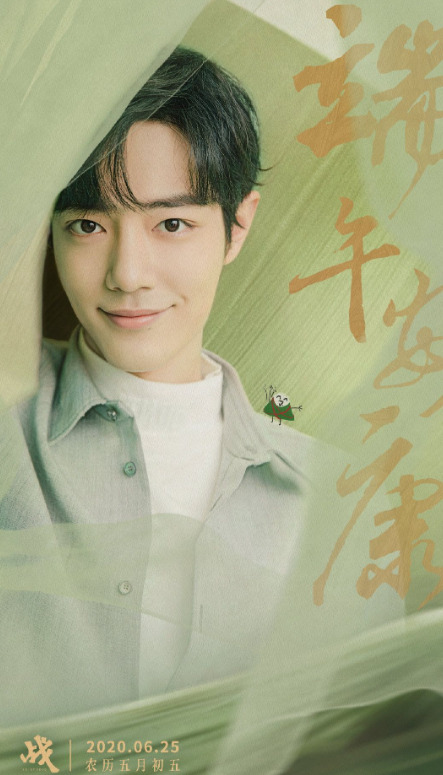
Xiao Zhan

Li Bowen

Li Qin за специалната програма на CCTV-3 по повод празника

Jing Boran за специалната програма на CCTV-3 по повод празника
#dragon boat festival#qu yuan#cao e#perfume pouches#zhong kui#zongzi#li qin#xiao zhan#li bowen#shen yue#china
8 notes
·
View notes
Photo
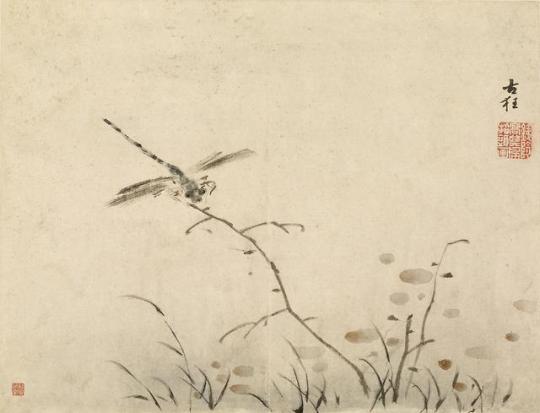
Dragonfly, Gao Qipei, 1713
#art#art history#Asian art#China#Chinese art#East Asia#East Asian art#Imperial China#Manchu Dynasty#Qing Dynasty#Ching Dynasty#Gao Qipei#animals in art#insects#dragonfly#dragonflies#18th century art#Walters Art Museum
261 notes
·
View notes
Photo
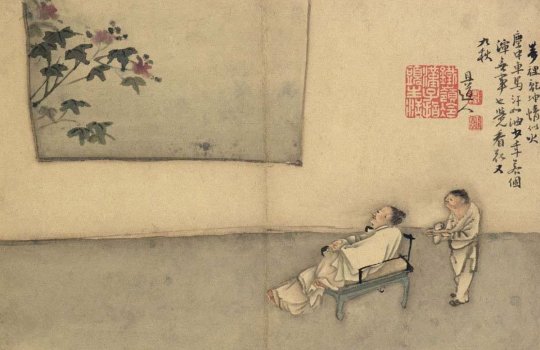
GAO QIPEI (1660-1734)
Figures
Each leaf inscribed and/or signed, with a total of seventeen seals of the artist
Colophon by Ye Gongchuo (1881-1968), signed with one seal, dated yichou year (1925)
Titleslip by Ye Gongchuo with one seal
Handwritten note by Chen Rentao (1906-1968)
Album of ten leaves, ink and colour on paper
Each leaf measures 26 x 32 cm. (10 1/4 x 12 5/8 in.)
interesting notes found in chinese and translated by google, and they may be wrong but they are amazing:
Gao Qipei was born in the 17th year of Shunzhi in Qing Dynasty (1660) and died in the 12th year of Yongzheng (1734). He made one (1672-1734) at the age of 75. The word Wei Zhi, also called Wei San, was called Qieyuan, or Shuqi Taoist, and was also called Nancun, from Tieling (now in Liaoning). Gong Poetry. When he was young, he studied traditional painting. Landscapes and figures were influenced by Wu Wei. After his middle age, he began to paint with his fingers. His paintings of flowers, trees, birds and beasts, fish, dragons and figures are all simple and vivid. Interesting.
He is also the author of "Qieyuan Poems".
According to "Tieling County Chronicles", he was a descendant of a famous eunuch, and was the fifth son of Gao Tianjue, Qingqi captain of Qingqi inlaid with a white banner in the Qing Han army. Gao Qipei studied painting at the age of eight. He traveled to Guangdong with his uncle Gao Chengjue. At that time, there was Wu Wei in the official office of Guangdong, who was able to paint with fingers, and Gao Qipei was deeply influenced by him. He lost his father at the age of seventeen and was raised by his uncle Gao Chengjue. He did not apply for the imperial examination. Zu Yin served as Yaozhou Mu in the 33rd year of Kangxi (1694) and was transferred to Yu Bulang the following year. Forty years in Kangxi (1701), he was governed by the prefects of Suzhou, and two years later, he moved inward as a member of the Ministry of Engineering, Wailang. In the forty-five year of Kangxi (1706), he was sent out to visit Wenchu Road in Zhejiang Province. Later, he was lost to the salt department because of a debt to the salt department while he was serving as a young transport agent. In the fifty-fourth year of Kangxi (1715), Gao Qipei stepped into his official career and served as the Sichuan branch patrol on the South Shuining Road in Sichuan for six years. He was promoted to the governor of Sichuan and served in Chengdu in the fifty-ninth year of Kangxi (1720). . In the first year of the Yongzheng period (1723), he moved to Guanglu, the minister, and was promoted to the right minister of the penalty department in September. In the second year, the red flag was promoted to the capital of the Han army, and still led the rank of the right servant of the criminal ministry. In July of the fifth year of the Yongzheng period (1727), he was dismissed from office due to a mistake in his appointment as the Secretary-in-Chief of the Criminal Department. Although he lived in another country for a long time and wandered around the ocean, he did not forget his hometown. His paintings often included: "Tieling Gao Qipei Finger Painting", "Tieling Gao Qilang", "Tieling Ancient Madness", so people had "Gao Tieling" for him. "The name.
In Gao Qipei's later years, the reputation of finger painting spread far to North Korea, but he still painted "cannibalism to suck blood and frequent candlesticks during the day." In the eighth year of Yongzheng (1730), Yingzhao Yuanmingyuan Ruyi Museum was painting for 3 years, and he created fine silk meticulous paintings such as "The Map of the Yangtze River". Gao Bing's "Finger Painting Theory" records that Gao Qipei was once a portrait of Lu Shuntu, the Shangshu of the Ministry of War, and he drew a standing statue, which is in line with the real person. After the painting was completed, Lu Shuntu said ecstatically : "It's so skillful”
118 notes
·
View notes
Photo
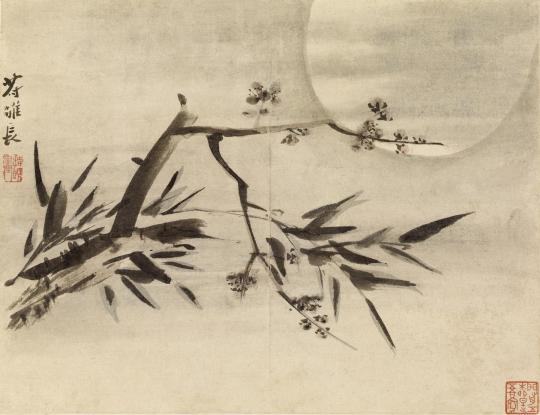
Gao Qipei (1660-1734), Bamboo Plum Blossoms and moon, 1713
9 notes
·
View notes
Photo

Tiger Seen from Above
by Gao Qipei (1660-1734),
c. 1700
Rijksmuseum, Amsterdam
7 notes
·
View notes
Photo

Veil, HyunJung Kim
Heaviness wrapped up with Lightness – Reading Kim HyunJung’s painting Lee DongChun (Fine art Connoisseur) Kim HyunJung’s paintings are cute and interesting. Her painting reminds us of paintings by Qi Baishi 齐白石 (1864-1957). Qi Baishi pursued beauty in his life, and his artistic spirit is found in his plant-and-insect paintings, flower-and-bird paintings, and figure paintings. Qi Baishi’s artistic spirit is sensed in Kim’s interesting subject matter and candid depiction.Kim audaciously uses ink and bright hues in in the manner of Qi Baishi who applied ink to leaves and red to flowers 墨叶红花. The composition in which subject matter is drawn to the edge of the paper is parallel to that of Qi Baishi’s flower-and-bird paintings and landscape painting of Li Keran’s 李可染 (1907-1989). Kim obviously learned from Qi Baishi. Qi Baishi said, “Learn from me you stand, copy from me you fall 学我者生, 似我者死.” Kim modeled herself after Qi’s artistic spirit rather than his painting style. Kim explored the artistic spirit in Qi Baishi’s painting, in which he emphasizes the meaning of painting and expresses his spirit, and reconstructed this in a realistic rendition. She calls this the “chulsa-ipgong 出写入工” technique. This is a melding of “xieyi 写意” painting (painting that underlines the painter’s spirit), “gongbi-hwa 工笔画” (painting done very carefully with the utmost care for details), and a new invention in tune with her emotion. Zheng Xie 郑燮 (1693-1765), one of the Eight Eccentrics of Yangzhou during the Qing Dynasty asserted, “Learn half, and throw away half 学一半, 撇一半.” This means even if a tradition is excellent, you have to learn only half of it. However, the traditional is currently completely disregarded. Kim learned her ‘half’ from traditional Eastern techniques. She studied the idioms of flower-and-bird painting from Song Dynasty, and learned from artists such as Chen HongShou 陈洪绶 (1599-1652), Yun ShouPing 恽寿平 (1633-1690), ShiTao 石涛 (1641-1707), BaDaShanRen 八大山人 (1625-1705), Gao QiPei 高其佩 (1660-1734), Jin Nong 金农 (1687-1764), and Kim HongDo 金弘道 (1745-1806). Moreover, she explored new methods in expression of color in traditional techniques. As she felt insufficiency in the use of pigment to depict significant parts of a painting, she made use of embroidery. This technique called “hwaju-subo 画主绣补” (Paining is used as primary and embroidery as ancillary) brought a new vitality to gongbi-hwa. The techniques of “chulsa-ipgong” and “hwaju-subo” are not the only revolution and innovation Kim has pursued. Getting psychological counselling, Kim realized the existence of her inner-child. She named her “Lala” and represented her special emotion in a pictorial language through this. Her Lala painting is a projection of her inner-child that she became aware of through psychological consultation, and for the artist a process of healing. This painting is in no way the product of pop art, but the sublimation of an artist’s inner-child to a work of art for the first time in art history. Kim’s Finding implicit rules is a portrayal of a young girl in meditation. The little girl carrying Lala on her back gazes vacantly at a dragonfly on a bare branch against the backdrop of a brick wall. Lala and the little girl look cute. The brick wall is a metaphor for constant time whereas the bare branches and dragonfly represent finite time in nature. The dragonfly acts out as the last leaf by O. Henry (William Sydney Porter, 1862-1910). As a projection of a psychological essay in painting, this work is a new literati painting of the 21st century reflecting Kim’s distinctive art-world. Kim lends new energy to gongbi-hwa through her realization of traditional Eastern painting. Kim has incarnated the spiritual world of intellectuals in our age in exquisite, flamboyant gongbi-hwa. This is why Chinese aestheticians and art historians have recently taken note of Kim’s painting.
https://www.saatchiart.com/art/Painting-Veil/960197/3943575/view
1 note
·
View note
Photo
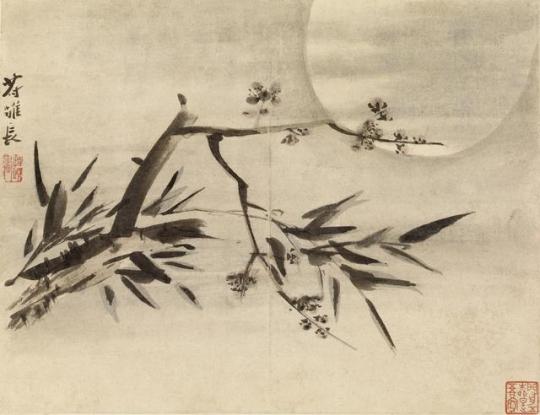
Bamboo, Plum Blossoms, and Moon, Gao Qipei, 1713
#art#art history#Asian art#China#Chinese art#East Asia#East Asian art#Gao Qipei#Qing Dynasty#Manchu Dynasty#floral painting#still life#moon#moonlight#18th century art#Walters Art Museum
790 notes
·
View notes